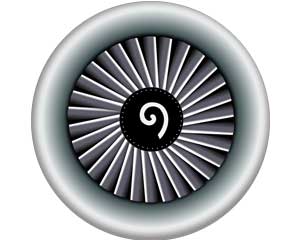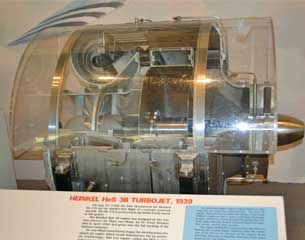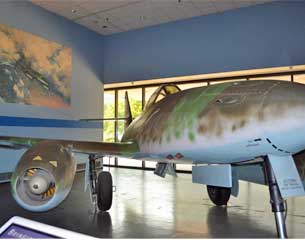Facts about Jet Engines
Posted by Admin / in Science Facts

Jet Engine
These facts about jet engines include the history of jet engines, the types of jet engines and how jet engines work. Find out these facts about jet engines and more.
The History of Jet Engines
- Prior to the development of jet engines, traditional piston engines were used for aircraft. In fact, the Wright Brothers used an aluminum piston-based engine for their first airplane, the 1903 Wright Flyer. By the 1930's aeronautical engineers thought that airplane speeds might be reaching their limit. They did not understand how a piston engine could spin a propeller any faster.
- In the 1930s two men independently though of a way to increase the power and speed of an engine capable of powering an aircraft. Dr. Hans von Ohain and Frank Whittle are recognized as the co-inventors of the jet engine.
- The first type of jet engine invented by both Dr. Hans von Ohain and Frank Whittle was the turbojet engine.
- On August 27, 1939 Dr. Hans von Ohain successfully flew the first airplane powered by a turbojet engine. The Heinkel HeS 3B Turbojet was the first jet engine to power an aircraft.
- The first type of jet engine invented by both Dr. Hans von Ohain and Frank Whittle was the turbojet engine.
- The German Messerschmidtt ME 262 A was the first combat jet aircraft. It was used by Germany at the end of World War II.
- Today there are 3 types of jet engines. The 3 types of jet engines include the turbojet engine, the turbofan engine, and the turboprop engine.

The Heinkel HeS 3B Turbojet

The first combat jet aircraft was the Messerschmidtt ME 262.
How a Jet Engine Works
- A jet engine is similar to a piston engine, but it is a little more complex. Instead of having a design which uses fuel burned to move pistons through a four-stroke cycle, a jet engine is powered by constantly spinning turbine blades. Making the turbine blades spin, requires a continuous supply of fuel and air to burn.
Turbojet Engine Facts
- Turbojet engines were the first type of jet engines made.
- Turbojet engines are more complex than a piston engine, but are the most simple type of jet engine.
- A turbojet engine has a compressor, a combustion chamber and a turbine, which all replace pistons to produce thrust from the rear of the engine.
- In order to produce enough thrust to power an airplane, air passes through the compressor and is burned along with fuel in the combustion chamber driving the engine's turbine, which creates thrust.
- A turbojet engine is a simple type of jet engine, but not as efficient as a turboprop jet engine.
Turbofan Engine Facts
- A turbofan jet engine has an internal fan at the front of the engine.
- In addition to the fan at the front of the engine, turbofan engines have a compressor, a combustion chamber (also known as the combustor) and a turbine similar to turbojet engines.
- Modern turbofan engines have two compressors near the front of the engine. The first compressor is known as the booster. The second compressor is a high-pressure compressor.
- Modern turbofan engines also have two turbines near the rear of the engine. The first turbine is a high-pressure turbine and the second is a low-pressure turbine.
- The fan on a turbofan engine also forces air around the outside of the main part of the engine. This stream of air helps to provide some additional thrust. It also cools the engine and helps to reduce engine noise.
- Modern turbofan engines are very efficient and are used by most commercial aircraft today to save fuel and reduce flight costs.
Turboprop Engine Facts
- A turboprop engine is similar to a turbofan or turbojet engine, except it has an external propeller.
- As this type of jet engine turbine rotates as a result of fuel and air burned in the combustor, the rotation of the turbine then drives the rotation of the propeller.
- Similar to many electrical motors, a reduction gear is used in a turboprop engine. The turbine is spinning much faster than a propeller normally spins. The reduction gear translates the rotation of the turbine down to the needed rotation speed of the propeller.
- A turboprop engine has more horsepower than a piston engine of the same size.
- A turboprop powered aircraft generally is most efficient between the altitudes of 20,000 to 30,000 feet.

Turbofan jet engines like this power most modern commercial airliners.
